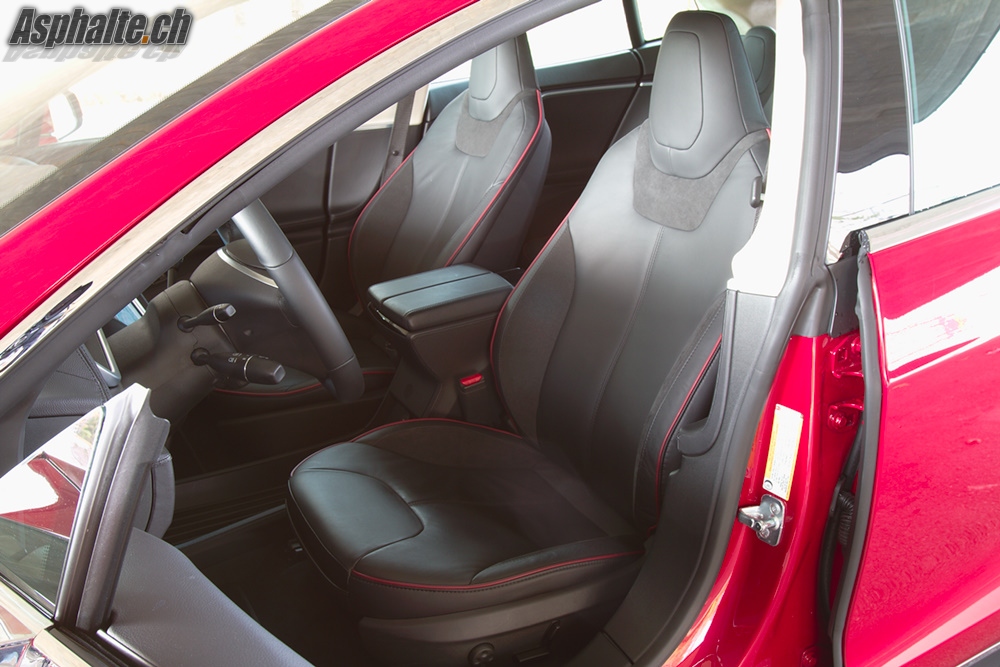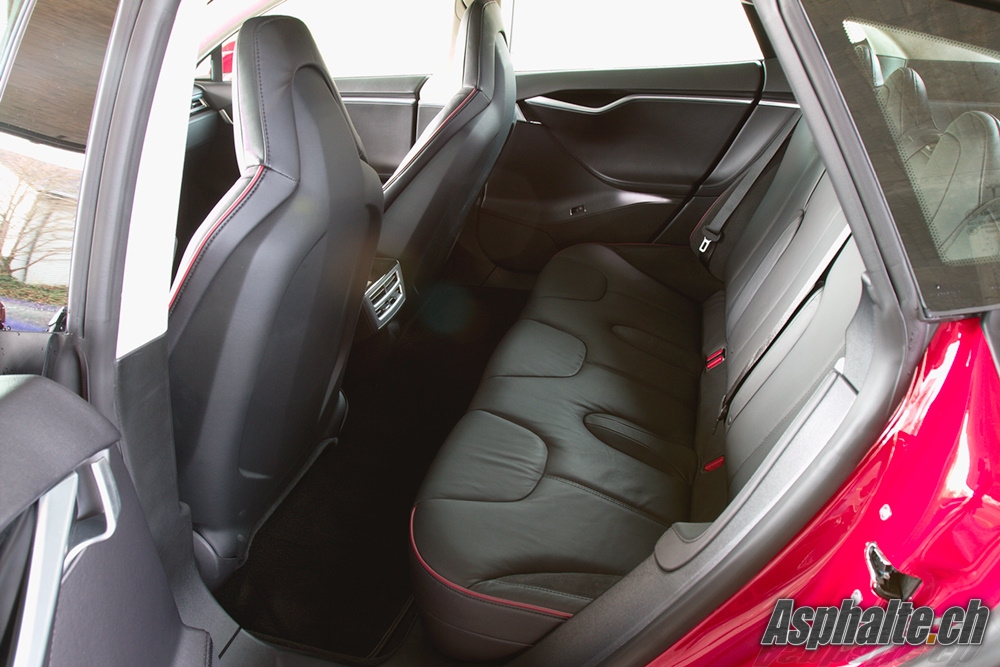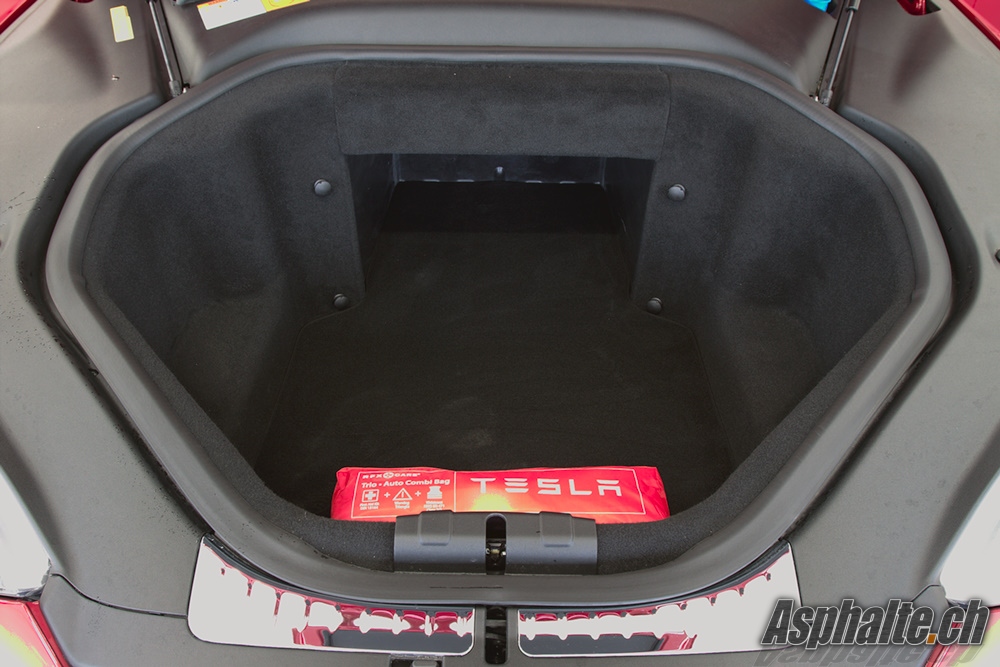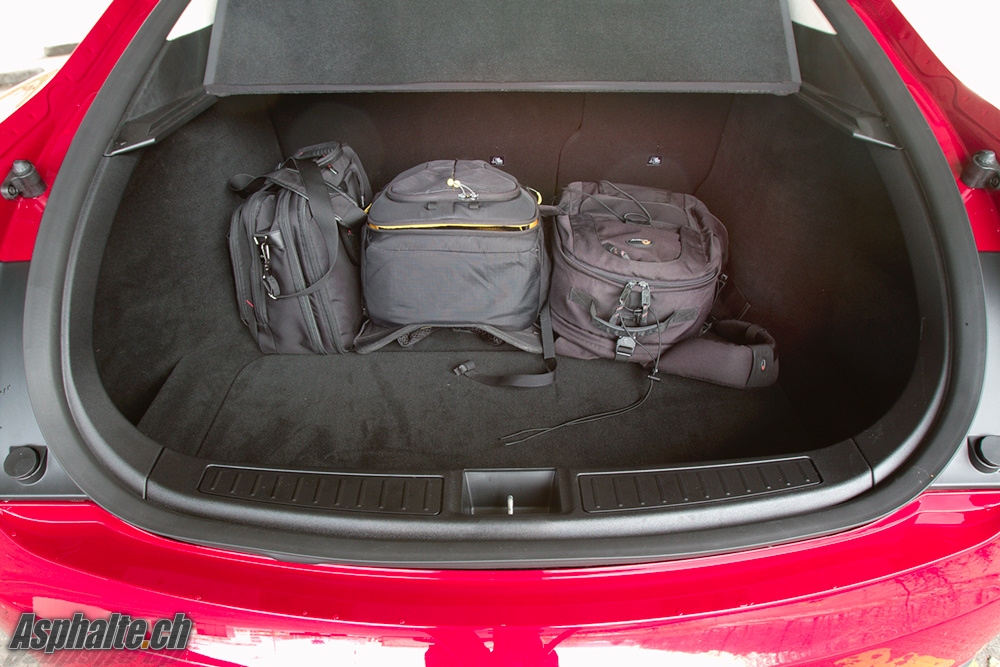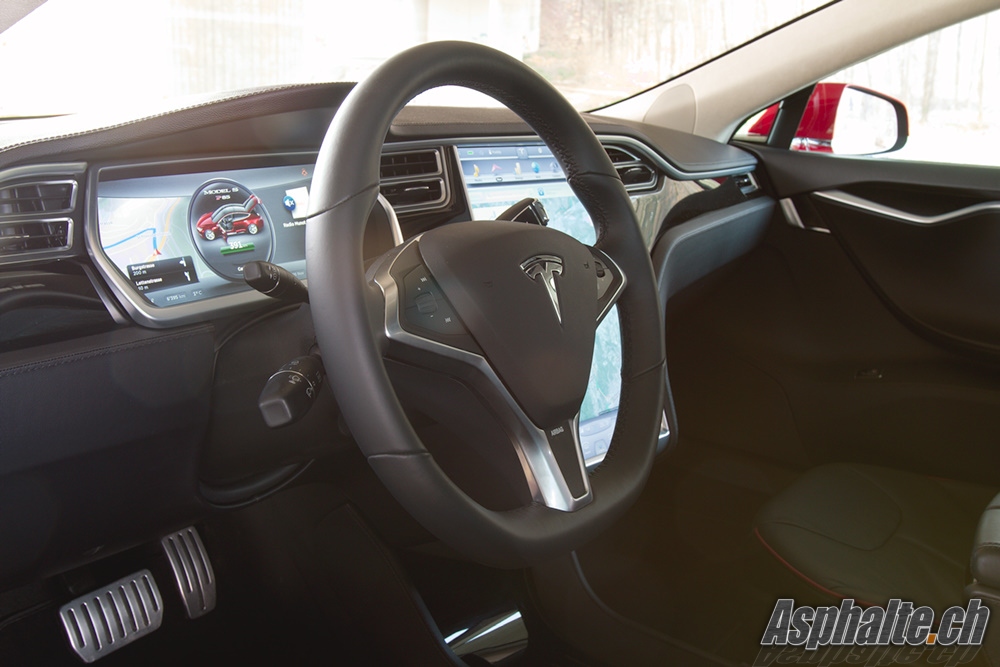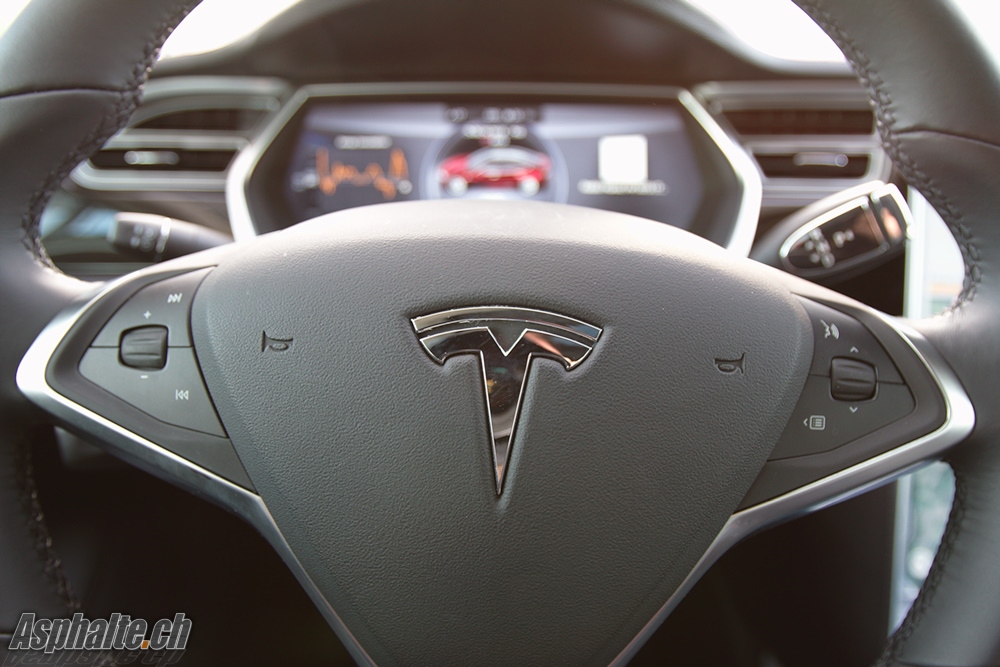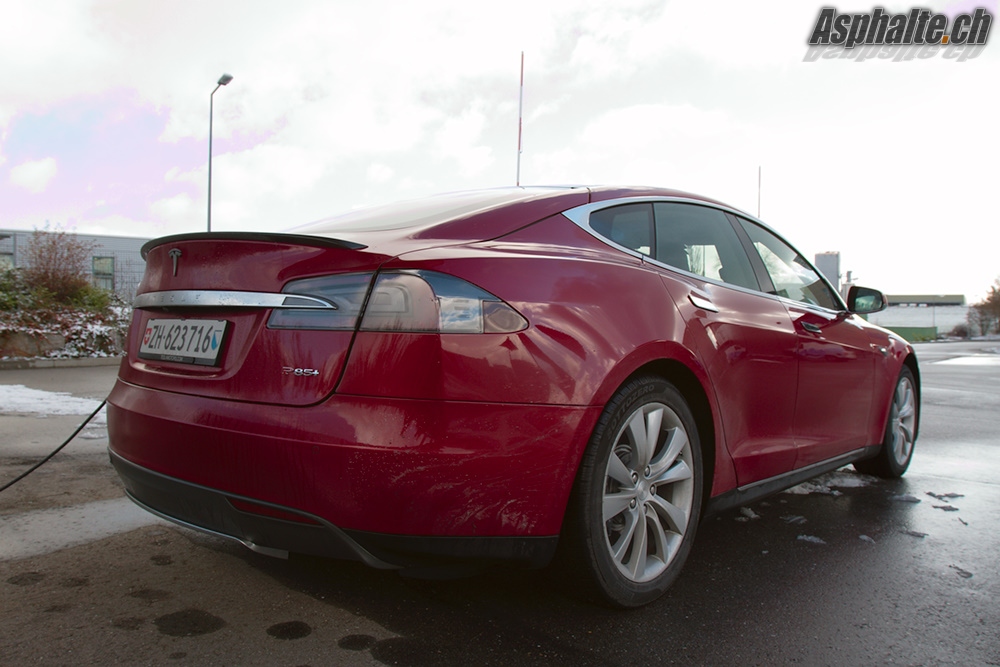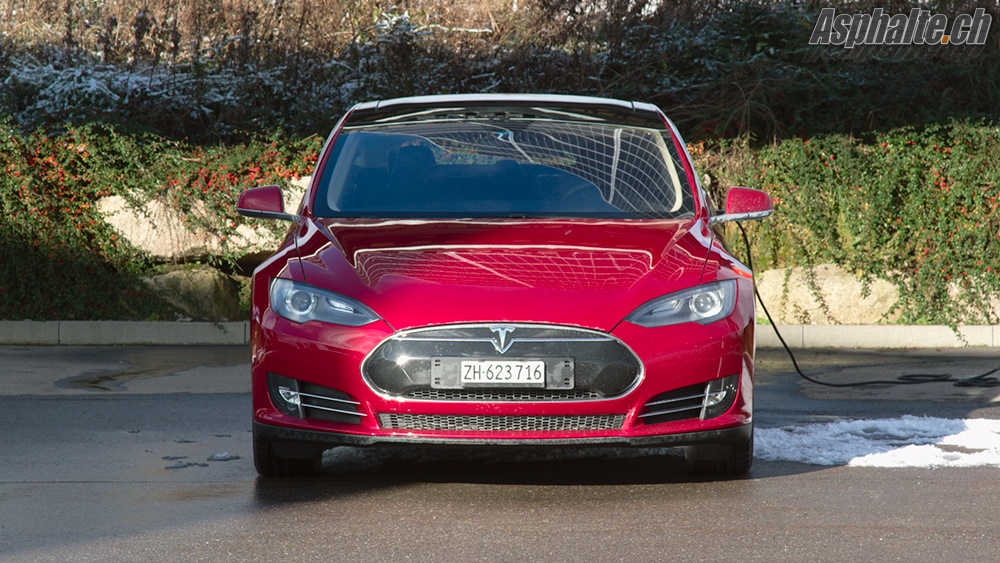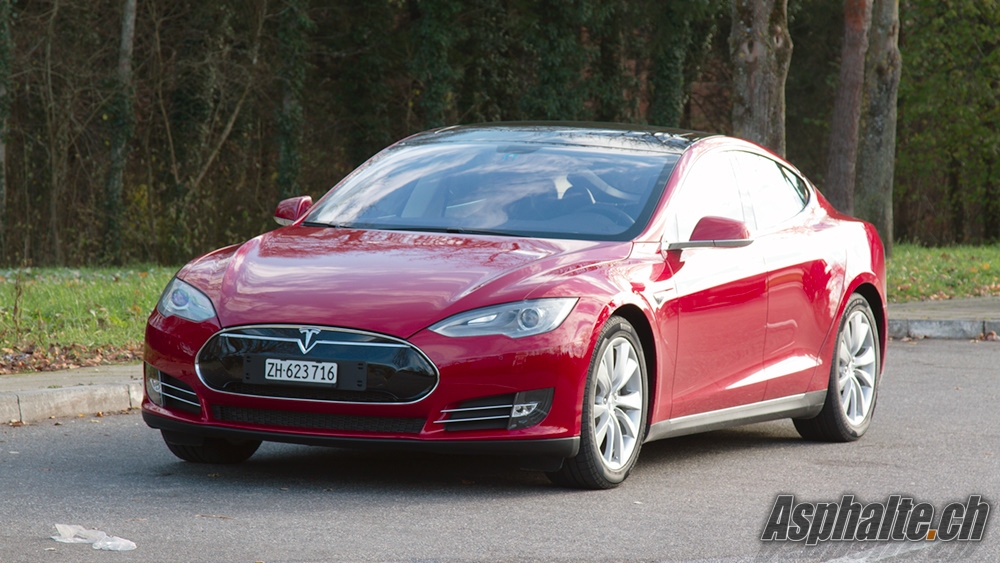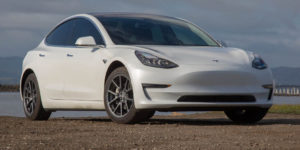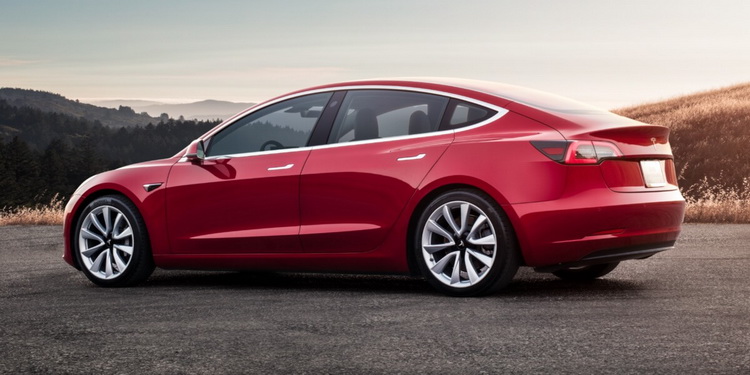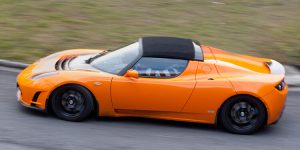Driven: Tesla Model S P85+
The giant panoramic roof is not only enjoyable for the natural light it brings to the cabin. It is also a necessity if one ambitions to transport adults in the back seats. The bench is high and shallow, and space at the knee sufficient, comparable to a Porsche Panamera. I am only 5’11” but my skull touches the glass surface, a situation which is viable for short distances but not comfortable. The situation gets critical in a car equipped with the standard metal roof. More than an inch is missing to make the rear seats viable for an adult. This limitation is difficult to understand: the Model S platform should have provided a lot of flexibility to Tesla designers to give the Model S a roomy interior. It is the case at the front, but this large sedan is more a “2+3” than a real 5 seats full size sedan. Even if the rear passengers measure only 5’7” and have enough clearance with the roof, head rest alignment may be a source of whiplash concerns. This is not a secondary consideration: the interior design of the Model S cannot welcome four adults comfortably and safely, a critical shortcoming for a sedan of this size.
For the front occupants, the absence of a center console provides ample room for movement. The elbow rest is quite high and houses two cup holders in another questionable ergonomic design choice. With all the space available, it should have been possible to let the driver use the cup holder and rest his right elbow as well. Surprisingly, the tall, hollow compartment cannot be opened for storage of travel items.
In addition to the configuration interface, the monumental 17” touch screen features several applications which can either be displayed on the full screen in portrait mode, or tiled in landscape mode. Satellite navigation is based on Google Maps, with real time information on traffic conditions and all the graphical topographic information that you have come used to expect on a computer. The internet browser is a curiosity, it would have been wise that it declared itself as a mobile device to load the tablet-oriented versions of websites and ease the load on the 3G connection. On Swiss cars, it comes in the guise of a Swisscom subscription, graciously offered for the first year. On the audio side, internet radio support comes through the TuneIn (http://tunein.com/) platform. Two USB ports allow connecting thumb drives with musical files on them, but music players are only supported through the wireless A2DP Bluetooth connection. It is impossible to listen to an iPod or iPhone through a cable connection.
After 2h15 of charge in this deserted industrial zone, the range indicator displays 253 km, insufficient to return home for the night, but confidence inspiring to cover 150km back to my starting point for another (and hopefully faster) charge. The menu for this segment is less appetizing: no autobahn naughty stuff anymore, but a very disciplined 120 km/h cruise speed with gentle acceleration and zealous eco-drive.
Kinetic energy recovery is essential to electric and hybrid cars. The vast majority uses the electric motor as a generator and thereby induces artificial engine braking to recharge the batteries. Most also have some form of splitter system to modulate braking and harvest as much energy as possible before actuating the hydraulic system to pinch the discs and dissipate kinetic energy as heat. On the Model S, Tesla has taken a different approach. Two regeneration modes are proposed, but these are menu settings, not driving modes accessible in real time, unlike the B mode in Toyota’s Hybrid Synergy Drive for instance. By default, electric motor braking is huge, as with the Tesla Roadster. Lifting up the throttle induces such a regenerative deceleration (up to 60 kW, or three times that of a Prius) that it is almost never necessary to use the brakes in conventional driving situations. One must however learn to modulate the movements of the right foot to prevent passengers from feeling car sick. The alternative is to set the Model S in “Regenerative Braking : Low” mode, which results in more conventional motor braking. Recourse to the brake pedal becomes necessary more frequently, resulting in a less optimal recovery of kinetic energy. It is a pity that the Model S does not feature adjustable regenerative braking coupled with the brake pedal.
During the journey, I keep a close watch on the range indicator and notice – with some relief – that the projection is almost realistic for a mellow driving style and nearly achievable in flat terrain. I reach Winterthur, my starting location, with 150km on the odometer and 170km less in range, which equates to 214 Wh/km of electrical consumption at 89.3 km/h (55.5 mph) of average speed. My layover has only one goal: charge up to have enough range to reach Lucerne ! The Tesla Service Center does not yet have a Supercharger station, and the maximum output of their 400V AC station is 26A, or 80 km per hour of charge. I have another 93km to cover so I aim to depart with 160km of autonomy and am on my way 56 minutes later. Night has fallen. Thus far, I have driven 309km and charged the car for 3 hours and 12 minutes.
Sucked into the traffic jams around Zürich at rush hour, I was expecting mileage to improve in slow traffic but that was surprisingly not the case. It is hard to tell whether the stop-and-go driving pattern or the drain from peripherals (headlights, fan), but the power-meter is stubbornly stuck above the typical dotted line. Traffic finally clears up, and a beat phenomenon appears between 100 and 135 km/h, clearly emanating from the rear axle: I have noticed it already earlier in the day, and it is clearly reproducible, gaining amplitude around 100 km/h and fading away above 140 km/h. It could be specific to this car or to the tires, but it is certainly not a balancing problem: there is no vibration, just noise.

